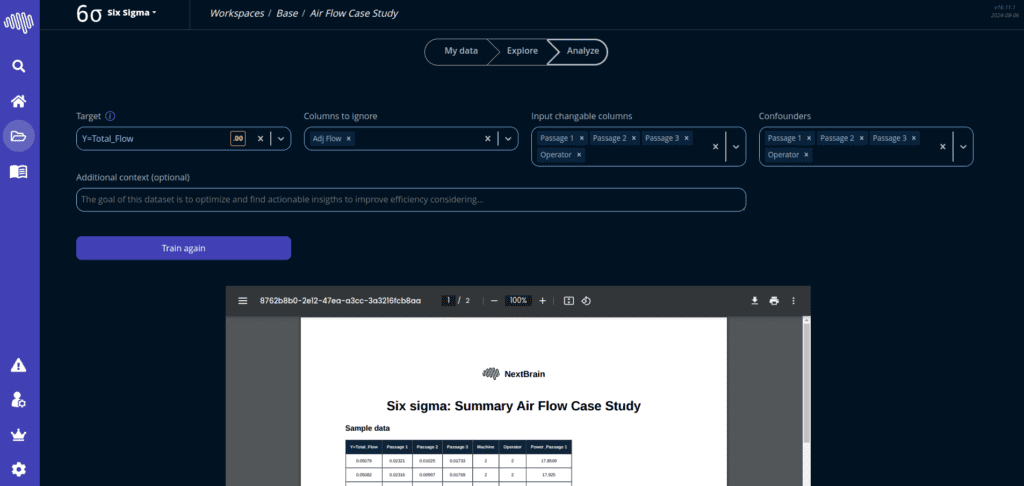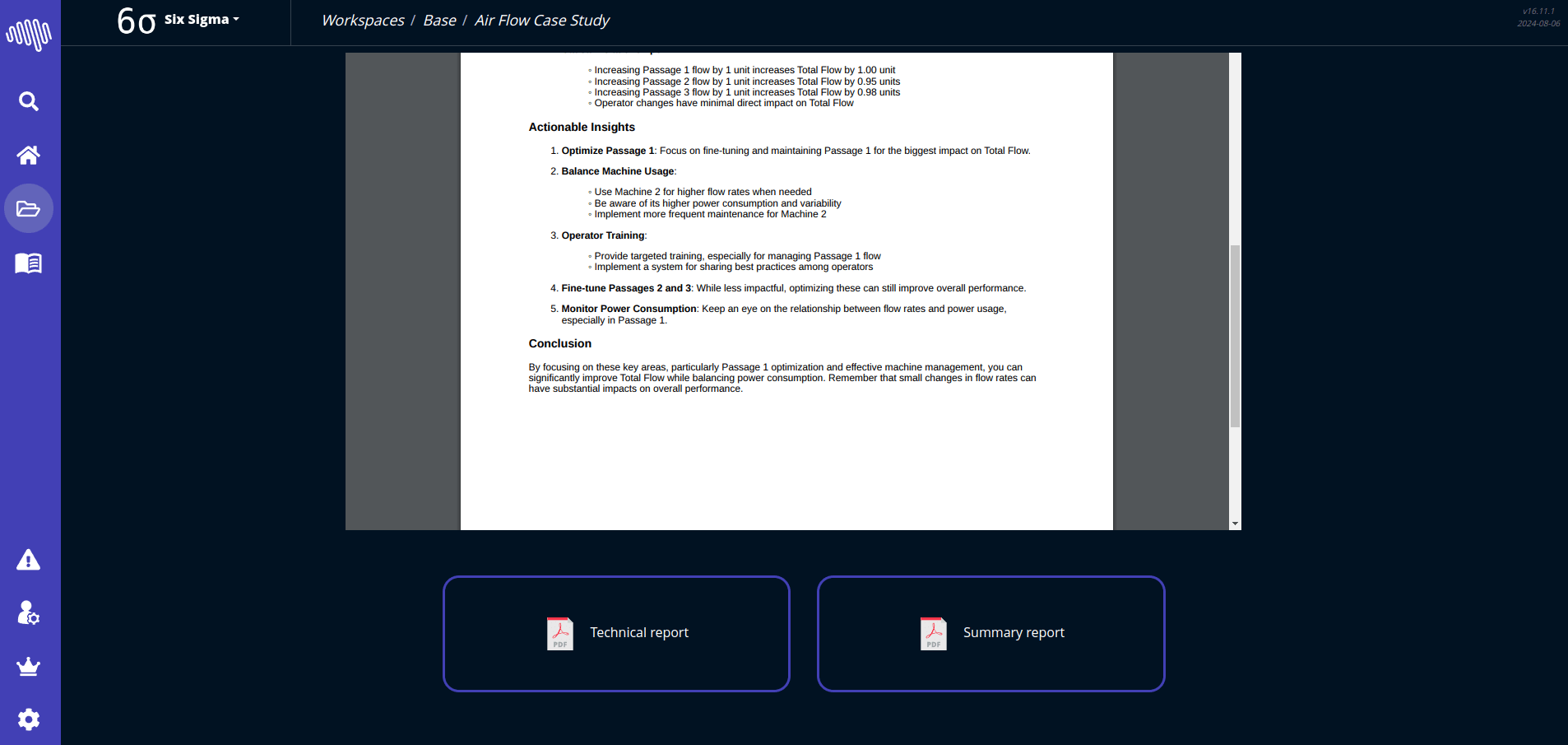シックスシグマの導入
シックスシグマは、ビジネスプロセスの質と効率を向上させることを目的とした厳格でデータ駆動型の手法です。1980年代にモトローラから発祥したシックスシグマは、以来、さまざまな業界で広く採用され、プロセスの欠陥や変動を最小化し、全体的なパフォーマンスを向上させています。
シックスシグマの基本原則
シックスシグマは、DMAICという頭字語で要約される5つの基本原則を中心に展開されています。
- 定義する: 問題、目標、および顧客(内部および外部)の要件を明確に定義します。
- 測定する: 現在のプロセスのパフォーマンスを正確に測定します。
- 分析する: 欠陥や非効率の根本原因を特定します。
- 改善する: 根本原因に対処するためのソリューションを実装し、検証します。
- 管理する: 改善を維持し、時間の経過とともに一貫したパフォーマンスを確保します。
シックスシグマの重要概念
- 品質に対する重要項目 (CTQ): 顧客にとって最も重要な属性。
- 欠陥: 顧客が求めるものを提供できないこと。
- プロセス能力: あなたのプロセスが提供できるもの。
- バリエーション: 顧客が見るものと感じるもの。
- 安定したオペレーション顧客が見るものや感じるものを改善するために、一貫性があり予測可能なプロセスを確保する。
- シックスシグマ設計(DFSS)顧客のニーズとプロセス能力を満たすための設計。
シックスシグマの利点
- 品質の向上プロセスのばらつきの減少は、欠陥の減少と高品質な製品/サービスにつながる。
- 顧客満足高品質な成果の一貫した提供は、顧客満足と忠誠心を高める。
- コスト削減効率的なプロセスは、無駄、手戻り、および運用コストを削減する。
- 従業員の士気問題解決に従業員を巻き込むことで士気が向上し、継続的改善の文化が育まれます。
- 競争優位性高品質で効率的なプロセスは、組織に市場での競争優位性を与えます。
シックスシグマと機械学習
シックスシグマと機械学習(ML)の統合は、データ分析とプロセス最適化の取り組みを大幅に強化できます。MLがシックスシグマの手法を補完する方法は次のとおりです:
- Predictive AnalyticsMLモデルを使用して、欠陥やプロセスの失敗が発生する前に予測します。
- アノマリ検出潜在的な問題を示す可能性のあるプロセスにおける異常なパターンや外れ値を特定します。
- プロセスの自動化効率を向上させるために、反復的でデータ集約型のタスクを自動化します。
- 高度なデータ分析: プロセスのパフォーマンスと根本原因分析に対する深い洞察のためにMLアルゴリズムを活用します。
組織におけるシックスシグマの実装
- トレーニングと認証: 従業員のためにシックスシグマのトレーニングと認証に投資し、熟練した労働力を構築します。
- プロジェクト選定: 組織の目標に沿い、パフォーマンスに重大な影響を与えるプロジェクトを選択します。
- データ収集と分析: 意思決定を支えるために、堅牢なデータ収集方法と高度な分析を利用します。
- 継続的改善継続的な改善の文化を育成し、従業員がプロセスの非効率を定期的に特定し解決することを奨励します。
- テクノロジーを活用するSix Sigmaの取り組みを強化し、より良い結果を達成するために、機械学習やその他の先進技術を統合します。
ステップバイステッププロセス
- データをロードする最初のステップは、データセットをプログラムにロードし、さらなる処理のために利用可能にすることです。
- 空の列を削除するデータを整理するために、データが含まれていない列を排除します。
- 空の行を削除する同様に、完全に空の行を削除してデータの品質を確保します。
- データ型の確認各列のデータ型が正しいことを確認し、処理エラーを防ぎます。
- データ品質チェックデータセットを徹底的にチェックし、品質問題を特定して対処します。
- 欠損値の補完データセット内の欠損値を埋めて、完全性を確保します。
- 異常の検出分析に影響を与える可能性のあるデータ内の異常や外れ値を特定します。
- ピアソン相関変数間の関係を理解するためにピアソン相関係数を計算します。
- シックスパック分析: プロセス能力を評価するためにシックスパック分析を実施します。
- ANOVA分析: ターゲット変数に対してANOVA分析を実施し、グループ間の分散を理解します。特に「Machine」によって。
- 回帰分析: ターゲット変数と最も相関のある列を使用して回帰分析を実行し、関係を予測します。
- AutoMLモデルの訓練: 機械学習タスクを自動化するためにAutoMLを使用してモデルを訓練します。
- 因果推論: データ内の因果関係を特定するために因果推論分析を実施します。
この構造化されたアプローチは、データの読み込みとクリーニングから、高度な統計分析と機械学習分析を実施するまで、包括的なデータ分析プロセスを保証します。
結論
シックスシグマは、プロセス改善と品質管理のための強力な方法論であり続けています。シックスシグマの原則と機械学習を組み合わせることで、組織は効率、品質、顧客満足度のさらなる向上を達成できます。シックスシグマのアプローチを取り入れ、組織を運用の卓越性と持続的な競争優位性に向けて推進しましょう。





 +34 910 054 348
+34 910 054 348 +44 (0) 7903 493 317
+44 (0) 7903 493 317